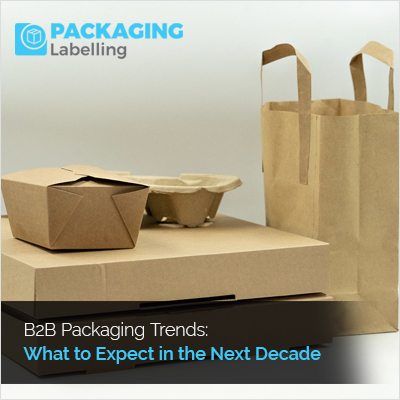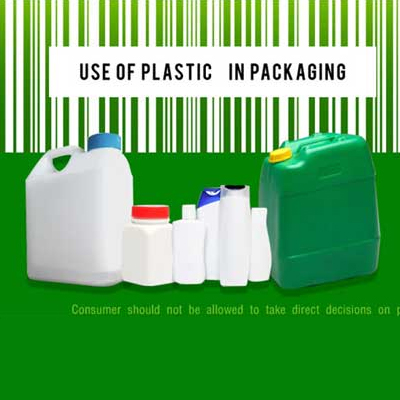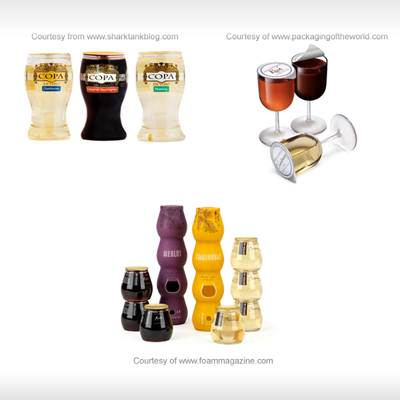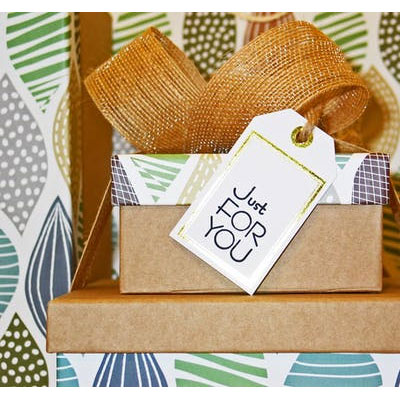B2B Packaging Trends: What to Expect in the Next Decade?

Introduction:
Amidst the ever-changing terrain of B2B commerce, packaging holds a pivotal position in shaping customer experiences, upholding product integrity, and participating in sustainability initiatives. With the onset of a new decade, businesses stand on the brink of substantial transformations in packaging trends. From an emphasis on sustainability to the integration of cutting-edge technologies, the upcoming decade is set to revolutionize the way B2B entities engage with packaging. This article delves into the imminent packaging trends that are poised to take center stage in the B2B sector over the next ten years.
1. Sustainable Packaging Solutions:
One of the most prominent trends that will continue to gain traction in B2B packaging is the focus on sustainability. With environmental concerns taking center stage, businesses are increasingly recognizing the importance of adopting eco-friendly packaging solutions. Expect to see a surge in demand for biodegradable materials, recyclable packaging, and innovative designs aimed at reducing waste.
Major corporations are likely to set ambitious sustainability goals, prompting their suppliers and partners to follow suit. The shift towards sustainable packaging aligns with consumer preferences and regulatory pressures, making it a key aspect for B2B enterprises to consider in the next decade.
2. Smart Packaging and IoT Integration:
The emergence of the Internet of Things (IoT) has inaugurated a new era for intelligent packaging, presenting B2B enterprises with unparalleled possibilities for tracking, monitoring, and interacting with their products. Over the next decade, a surge in the integration of IoT devices into packaging is anticipated, delivering real-time data on the location, condition, and usage of products.
Smart packaging not only enhances supply chain visibility but also allows businesses to offer value-added services to their customers. For instance, temperature-sensitive products can be monitored for quality assurance, and customers can receive timely notifications about their shipments. This trend is set to revolutionize how B2B entities manage their inventory and interact with their clients.
3. Customization and Personalization:
As consumer expectations evolve, B2B businesses will increasingly turn towards customizable and personalized packaging solutions. The ability to tailor packaging to meet specific client requirements not only enhances the perceived value of products but also strengthens brand loyalty. Expect to see advancements in printing technologies that allow for cost-effective and efficient customization of packaging materials.
Shifting away from generic packaging, the upcoming decade in B2B is poised for a paradigm shift where packaging evolves into a tool for companies to set themselves apart in a competitive market. This transition extends beyond simple branding, incorporating customized product presentations that mirror the unique identity and preferences of each business and its customer base.
4. Minimalistic Design and User Experience:
In the pursuit of sustainability and simplicity, B2B packaging is anticipated to undergo a shift towards minimalistic design. Streamlined, functional, and aesthetically pleasing packaging not only aligns with the modern design sensibility but also contributes to reducing material waste. This trend is likely to be driven by the need for efficiency in packaging processes and the desire to create a positive unboxing experience for customers.
Elevating user experience is set to take center stage in packaging design, as businesses strive to create a memorable and enjoyable unwrapping process. Brands will dedicate resources to crafting packaging that not only ensures product protection but also contributes to enhancing the overall perception of the brand in the eyes of the recipient.
5. E-Commerce-Focused Packaging:
As the e-commerce sector continues its growth, B2B packaging is required to adjust to the distinct challenges posed by online retail. Packaging designed for conventional retail environments may not be well-suited for the rigorous shipping and handling processes associated with e-commerce. In the forthcoming decade, there is an expected surge in the development of packaging solutions specifically crafted to meet the demands of the e-commerce supply chain.
Efficient, durable, and cost-effective packaging that ensures the safe delivery of products will be a priority for B2B businesses engaged in online commerce. The rise of omnichannel strategies will further drive the need for packaging solutions that seamlessly transition between different distribution channels.
6. Circular Economy Practices:
The forthcoming decade anticipates a heightened emphasis on circular economy practices in the B2B packaging sector. As awareness surrounding the environmental impact of packaging materials expands, businesses are poised to intensify their commitment to establishing closed-loop systems. This entails the design of packaging that is not only recyclable but is also crafted from recycled materials, fostering a more sustainable and resource-efficient approach.
B2B entities will explore innovative ways to reduce the environmental footprint of their packaging, such as exploring alternative materials, encouraging the return and reuse of packaging, and investing in efficient recycling processes. Circular economy practices will become a key differentiator for businesses committed to minimizing their ecological impact.
7. Integration of Augmented Reality (AR) in Packaging:
The integration of Augmented Reality (AR) stands as a potential game-changer in how B2B businesses engage with their customers through packaging. Over the next decade, there will likely be a growing incorporation of AR features directly embedded into packaging designs. This innovative technology empowers customers to interact with products in novel and immersive ways, thereby elevating the overall brand experience.
For example, packaging may include AR codes that, when scanned with a mobile device, unlock interactive content, product information, or even virtual try-on experiences. This trend not only adds a layer of excitement to the unboxing process but also provides B2B businesses with valuable data on customer engagement and preferences.
8. Regulatory Compliance and Safety:
In a time when there is heightened awareness regarding product safety and quality, B2B packaging trends are set to be shaped by a commitment to regulatory compliance. Stringent regulations about food safety, product labeling, and environmental standards will play a pivotal role in influencing how businesses approach the design and implementation of their packaging solutions. Anticipate a heightened focus on transparency, traceability, and adherence to international standards to guarantee the safety and integrity of products throughout the entirety of the supply chain.
As global trade expands, B2B enterprises must stay vigilant and proactive, ensuring that their packaging practices align with the dynamic regulatory landscapes. Adhering to industry standards is not only a means to mitigate legal risks but also serves as a cornerstone in building trust and credibility with both customers and partners.
Conclusion:
In conclusion, the next decade promises to be transformative for B2B packaging, driven by sustainability imperatives, technological advancements, and changing consumer expectations. Businesses that proactively embrace these trends and align their packaging strategies with evolving market demands will position themselves as leaders in their industries, fostering innovation, efficiency, and a positive impact on the environment. The convergence of these trends is set to reshape the B2B packaging landscape, creating exciting opportunities for those ready to adapt to the winds of change.









